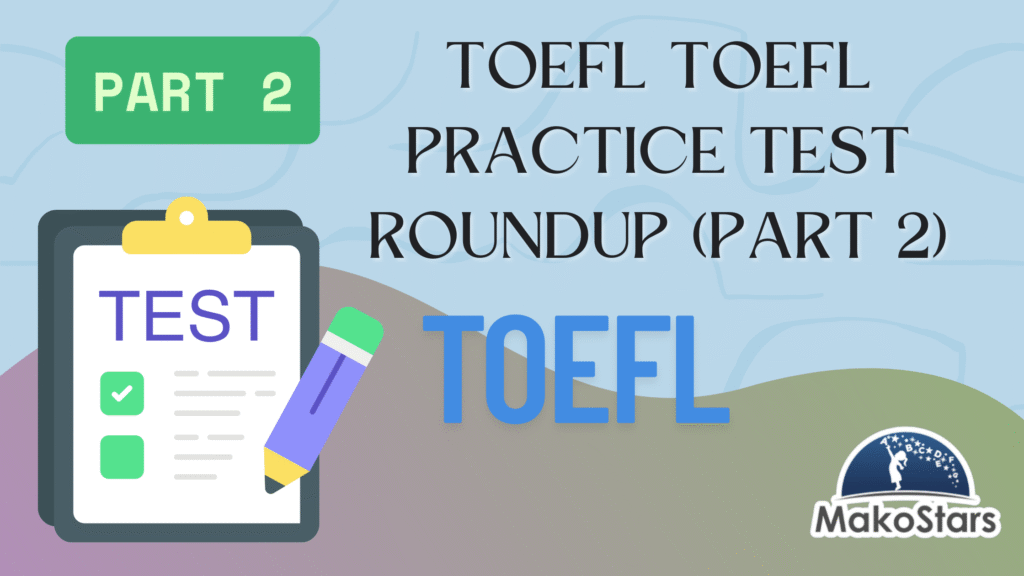Breaking Down the IELTS Exam Practice Question Types
Table of Contents
Introduction
IELTS barely requires an introduction; it is a standard entrance and visa qualification exam in English-speaking nations such as the United States, Australia, Canada, New Zealand, and the United Kingdom. The well-known International English Language Testing System (IELTS) assesses your language ability in four main fields: speaking, reading, writing, and listening.
To succeed on the IELTS exam, you need to understand the different kinds of questions you may face and strategies that you can use to address them effectively. In this blog, we’ll break down the IELTS exam practice question types for each section: Listening, Reading, Writing, and Speaking.
Different Kinds of IELTS Exams
There are two sorts of IELTS exams: Basic Training and Academic. Both examinations examine your English language abilities in listening, writing, speaking, and reading.
The IELTS General Training exam is required for anyone seeking a work visa in Australia, Canada, New Zealand, or the United Kingdom. It is also required of students hoping to enroll in high school or a vocational training program.
IELTS Academic, on the other hand, is appropriate for working professionals or students interested in furthering their studies at colleges overseas.
Listening Section
The IELTS exam practice listening test is a significant component of the IELTS, which assesses your listening comprehension in a formal or informal context. To perform well on this test, you must be familiar with the different kinds of questions that you might come across. The four sections that make up the IELTS Listening portion each have a different sort of question intended to assess your understanding of spoken English in various settings.
- Multiple Choice Questions
On questions with multiple choices, one can select one right answer or numerous correct responses. You must carefully study the question in order to determine how many replies are required.
Multiple-choice questions are used to assess a wide range of skills, and an IELTS exam practice test might be helpful. They may evaluate your awareness of particular details or the main points presented in the hearing text as a whole.
- Matching Type Questions
You have to match the options on the matching questions paper to a numbered list of the topics covered in the listening audio. These options might be a description or a criterion.
Pairing exercises evaluate your ability to focus on specific aspects while gauging your comprehension of the information discussed in speeches on well-known subjects. The practice portion of the IELTS test practice assesses your ability to follow two-person conversations as well. It can also be used to determine how well you understand the relationships and connections between the information presented in the listening text.
- Completing Plan, Map, And Diagram Labels
The objective of this IELTS exam practice question for the final exam is to fill in any blank labels on a map, diagram, or plan. Typically, the question paper will provide you with options to select from while responding.
This kind of labeling question tests your ability to understand location information and relate it to visual evidence. The words used to denote directions must be understood in order to assess the visual world accurately. Through this task, your ability to combine information from spoken and visual sources can be reviewed.
- Form/Note/Table/Flow-chart/Summary Completion
Create an outline that either fully or partially summarizes the listening text in this IELTS exam practice completion work. The outline highlights the central ideas or details found in the text. It could exist in several formats.
You must conform to the word limitation that is mentioned in the guidelines of IELTS exam practice and accurately record the words that you hear on the tape. The goal of this gap-filling exercise is to record the critical details that an attentive listener would definitely note in this specific situation.
- Sentence Completion
You will come across several sentences in this IELTS exam practice sentence completion activity that summarize essential information from either the entire listening text or a specific section of the reading material. It is your task to fill in the blanks in each sentence using the information from the audio source. A word count restriction will be mentioned.
- Short Answer Questions
In the IELTS exam practice, you will be given a question to answer briefly. You must use specifics from the text you are listening to and answer the question in the short-answer format.
Short-answer questions are used to determine your listening grasp skills for particular information in the listening text, such as places, prices, or schedules. It requires accurately identifying and responding concisely based on the specific details supplied in the recording.
Reading Section
Three sections with a range of question types are included in the IELTS exam practice reading session to assess your comprehension of reading. The texts are original and sourced from books, journals, periodicals, and newspapers. Those have been chosen for a non-specialist audience.
- Multiple Choice
Multiple-choice questions come in three different varieties:
- Select the best response from the four options (A, B, C, or D).
- Out of the five options, select the top two (A, B, C, D, or E).
- From the following seven alternatives, choose the top three: A, B, C, D, E, F, or G.
You may be asked to either complete a sentence or select the response that best addresses the question in its entirety for each multiple-choice question.
- Identifying Information
“Do the following statements match the information in the text?” will be the questions given to you once you’ve shown a number of statements. You fill up the response boxes with “True,” “False,” or “Not given” after answering the questions.
Knowing the distinction between “False” and “Not given” is crucial. “False” denotes that the passage contradicts the assertion in question. “Not given” indicates that the material in the paragraph does not support or deny the statement.
- Identifying Writer’s Views/Claims
You’ll be asked, “Do the following statements agree with the views/claims of the writer?” after being presented with a sequence of statements. In this sort of question, you must determine the writer’s point of view or claim. Next, you will choose between “Yes,” “No,” and “Not given.”
- Matching Information/Headings/Features/Sentence Endings
In the IELTS exam, your reading awareness is tested in a variety of ways by the kinds of questions. Matching features require you to match statements or information to a list of options, involve matching headings to the correct paragraphs or sections, and ask you to find specific details, examples, reasons, or descriptions within lettered paragraphs. This tests your scanning skills.
- Sentence Completion
In the IELTS exam practice sentence completion question type, you will finish sentences taken from the reading text. Guidelines will state how many words or numbers to use. Exceeding the word limit will result in losing the mark. Hyphenated words are treated as single words, and numbers can be expressed as either figures or words. Completing sentences estimates your ability to identify precise features.
- Summary/Note/Table/Flow-chart Completion
In the IELTS exam practice summary completion question type, you complete a summary of a section of the text using information from the passage. It may be a summary, notes, a table, or a flowchart. You might select words from the text or a list of answers. Instructions will specify word limits, and this task type evaluates your ability to understand details and main ideas from a section of the text.
- Diagram Label Completion
You fill in the labels on a diagram using a text description in the IELTS exam practice diagram label completion question type. Responses typically originate from a single area of the text and might be expressed as words or figures; words with hyphens are treated as single words. Diagrams may display machines, building parts, or other pictorial elements, often used with texts describing processes. Your ability to process and connect detailed descriptions to graphical information is put to the test in this task.
- Short Answer Questions
In this IELTS exam practice question type, you provide short answers to questions based on factual information from the text. Use words or numbers from the text as specified in the instructions. Words and figures can be used to represent numbers, and hyphenated words are treated as single words. The questions are presented in the text’s sequence. Short-answer questions measure your skill for finding and comprehending specific information.

Writing Section
The IELTS exam practice academic writing test consists of two tasks that assess your writing skills in different contexts. These activities cover topics of general curiosity and are ideal for students pursuing bachelor’s and master’s degrees or job registration. Answers to both assignments must be professional.
- Task 1 (Academic): Graphs, Charts, Tables, and Diagrams
In IELTS exam practice, you will be provided a graph, table, chart, or diagram. You will be asked to explain, summarize, or give an overview of the information in your own words. You can be asked to explain and display data, outline the steps in a procedure, explain how something operates, or describe a plan, design, or product.
- Task: 2 (Essays)
In this IELTS exam practice task essay, you will be required to answer the arguments, problems, or points of view. You’ll provide appropriate examples from your own expertise and experience to back up your position.
Speaking Section for IELTS Exam Practice
The IELTS exam practice speaking exam will evaluate how well you use spoken English. Students will talk to an IELTS examiner about a range of subjects during the 11–14 minute test.
Section 1: Introduction and Interview
The IELTS exam practice tester will ask you to identify yourself and mention your name at the beginning of Part 1 of the test. After that, you will be questioned about typical personal details, like your residence and present occupation (studying or working).
After that, you will be questioned about a variety of familiar subjects, such as your favorite movies, music, food, and weather. Usually, one or two subjects will be covered in the questions. If your response is too short, the examiner will ask you pre-arranged questions, listen to your explanation, and then encourage you to go into further detail by asking, “Why?
Section 2: Long Turn
After Part 1, the IELTS exam practice tester will give you a topic to discuss for one to two minutes. A card with the topic written on it, some paper, and a pencil will be given to you so you can write down notes. The card also contains the speaking prompt and a few topics you might discuss in your talk. You will have roughly one minute to get ready and write down notes before you speak. When your allotted time is up, the tester will notify you via a timer.
This section of the exam analyzes your capacity to communicate intelligently and effectively for extended periods on a given subject while applying suitable language.
Section 3: Discussion
In this part, you’ll discuss the subject more deeply and conceptually, showing the interviewer your ability to analyze, discuss, and think on the subject in greater detail, as well as express and defend your viewpoints.
In this session, the IELTS exam practice teacher will interact with you further and might ask you for proof of your beliefs to evaluate your ability to express yourself about the ideas and themes discussed in Parts 1 and 2. Part 3 assesses your ability to communicate and justify your thoughts, as well as analyze, speak about, and talk about a variety of issues related to the overall topic you discussed before.
Conclusion
Success on the IELTS exam requires an understanding of the different question categories and an understanding of how to approach them. You can increase your performance and confidence by taking the IELTS online test and becoming familiar with the question styles and IELTS exam practice. MakoStars provides effective English writing and more English-related tips for a better understanding of the language. Additionally, you can get extra advice on Study Books and Guides that Contain Practice for IELTS Exams in our articles. If you are interested in learning about the other tests, such as TOEFL, IELTS, and SAT, you can read more information here. Remember to practice regularly to get the score you want. I wish you luck!





![12 Basic Grammar Rules to Write Like a Pro [2025 Guide]](https://englishlearninghub.online/wp-content/uploads/2025/07/12-Basic-Grammar-Rules-to-Write-Like-a-Pro-2025-Guide-1024x576.png)

